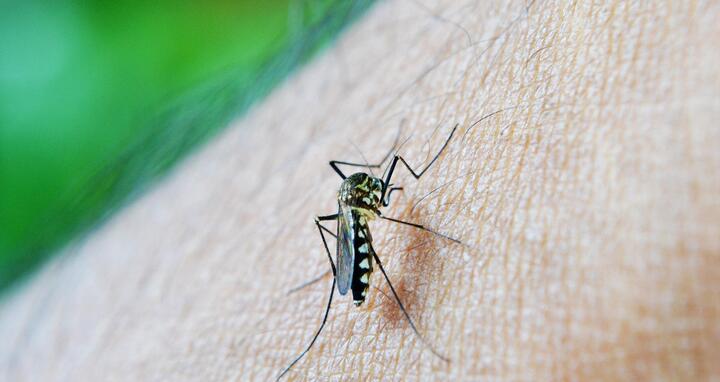How malaria harms unborn babies
Every year, malaria caused by infection with the parasite Plasmodium falciparum during pregnancy causes devastating consequences: an estimated 10,000 maternal deaths, 200,000 stillbirths and 550,00 babies born with low birthweight, mostly in Sub-Saharan Africa according to the World Health Organization. Despite this toll, little is understood about the exact mechanisms by which the infectiondamages the placenta and threatens unborn babies.
Now, a £2 million (€2.3 million) Wellcome Discovery Award will fund a five-year international project to shed light on this neglected public health issue. The project brings together leading scientists from the U.K., Kenya, and Germany, who will study host parasite interaction in placental tissue and use advanced omics technology to uncover how malaria silently undermines pregnancies.
“This award not only supports our joint research project, but in the long term will also contribute to establishing the Placenta Research Centre in Kenya. Know-how transfer from places like the Max Delbrück Center will enable state-of-the-art capacity building in placental biology research where it is most needed,” says Professor Jesse Gitaka, head of the project at Mount Kenya University.
Wellcome Discovery Awards provide funds for established researchers to pursue bold and creative ideas to deliver shifts in understanding related to human life, health and wellbeing.
An atlas of molecular pathways
Wyler, a scientist in the RNA Biology and Posttranscriptional Regulation lab of Professor Markus Landthaler at the Max Delbrück Center, will play a central role in this research effort. He and his team will use spatial transcriptomics and single-cell RNA sequencing technologies to study placental tissue and both maternal and cord blood to catalogue in unprecedented molecular detail, how red blood cells infected with Plasmodium falciparum interact with the placenta. These methods can trace subtle changes in gene expression and immune response at the level of individual cells. They can also help scientists catalogue molecular interactions among neighboring cells.
“Although malaria is endemic in sub-Saharan Africa and most women have developed immunity, the parasite can sequester in the placenta of pregnant women despite immunity,” Wyler explains. This can cause a cascade of events that include impaired blood flow, inflammation and reduced nutrient transport, all of which impair the function of the placenta. Studies have shown that pregnant women with placental malaria have a higher risk of delivering babies prematurely, with low-birth weight or stillborn.
Placental malaria is particularly difficult to diagnose in pregnant women because they are often asymptomatic and traditional blood tests may fail to detect the infection. In many cases, it can only be reliably identified through examining the placenta after delivery.
“We aim to develop a high-resolution atlas of disrupted molecular and cellular pathways and mechanisms that could be targeted for intervention,” says Wyler.
Building a global network
As part of the consortium, Professor Amanda Sferruzzi-Perri of the University of Cambridge, a leading authority on placental biology, will grow ‘mini-placentas’ in the lab to study biological changes that cause disease in the placenta, which can be affected by malnutrition and adverse environments, she says.
Wyler and Sferruzzi-Perri will also collaborate closely with Professor Taane Clark and colleagues at the London School of Hygiene & Tropical Medicine’s Malaria Centre, who are experts in parasite genetics and malaria epidemiology. “Our findings will contribute to the development of much-needed diagnostics and vaccines,” says Clark.
“The past years have seen massive advancements in the development and application of high-resolution methods in biomedical research,” says Wyler. “Our consortium is taking a comprehensive approach to understanding the world’s most neglected cause of pregnancy loss — and doing so in a place where the need is most urgent.”
Text: Gunjan Sinha
Further information
Contact
Dr. Emanuel Wyler
RNA Biology and Posttranscriptional Regulation lab
Max Delbrück Institute
Emanuel.Wyler@mdc-berlin.de
Gunjan Sinha
Editor, Communications
Max Delbrück Center
+49 30 9406-2118
Gunjan.Sinha@mdc-berlin.de or presse@mdc-berlin.de
- Max Delbrück Center
-
The Max Delbrück Center for Molecular Medicine in the Helmholtz Association lays the foundation for the medicine of tomorrow through our discoveries of today. At locations in Berlin-Buch, Berlin-Mitte, Heidelberg, and Mannheim, interdisciplinary teams investigate the complexity of disease at the systems level – from molecules and cells to organs and entire organisms. Together with academic, clinical, and industry partners, and as part of global networks, we turn biological insights into innovations for early detection, personalized therapies, and disease prevention. Founded in 1992, the Max Delbrück Center is home to a vibrant, international research community of around 1,800 people from over 70 countries. We are 90 percent funded by the German federal government and 10 percent by the state of Berlin.






